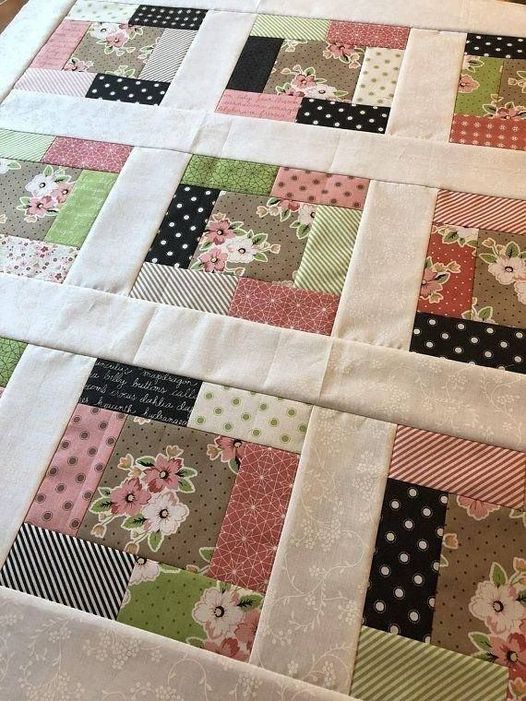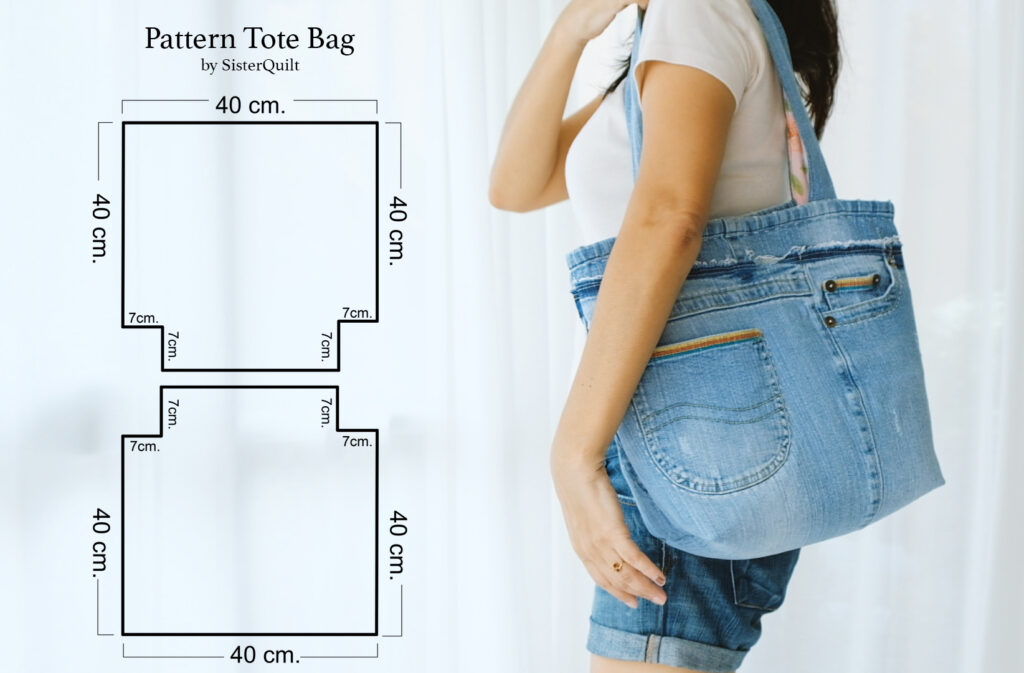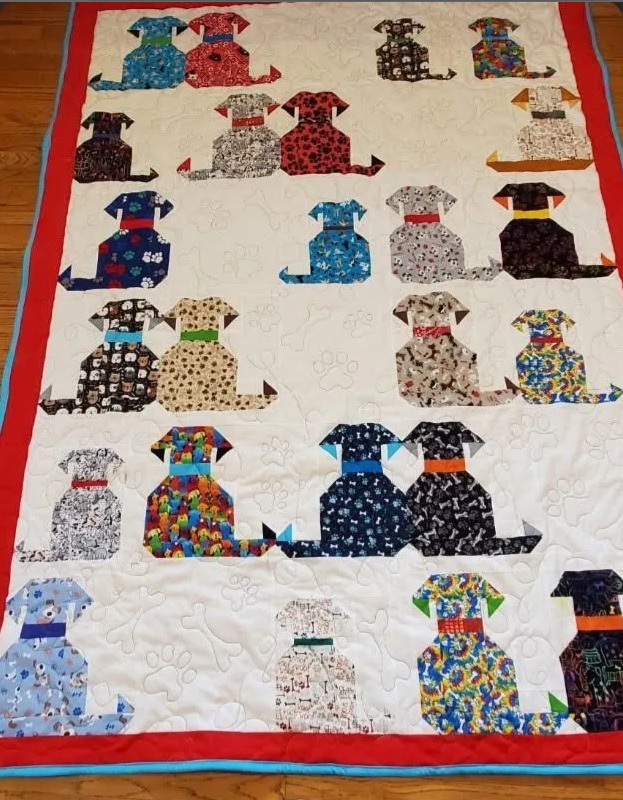The Log Cabin Quilt Block Free Pattern is one of the most timeless and beloved quilt designs in the world of patchwork. Known for its simple yet striking geometric layout, this block has been a favorite among quilters for centuries.
The design typically features a central square, often symbolizing the hearth of a cabin, surrounded by strips of fabric arranged in a radiating pattern. The result is a visually stunning block that can be adapted to countless variations and styles.
When working with the Log Cabin Quilt Block Free Pattern, quilters appreciate the balance between tradition and creativity. The block’s structure allows for easy customization with different fabric choices, color palettes, and layouts.

Whether you prefer bold modern fabrics or soft, classic tones, this block provides a canvas to showcase your quilting style while honoring a cherished design rooted in history.
Beyond its aesthetic appeal, the Log Cabin Quilt Block Free Pattern is also highly versatile. It can be used to create quilts of all sizes, from small lap quilts to large bedspreads. The blocks can be arranged in numerous layouts, including barn raising, courthouse steps, or straight furrows, giving each quilt a unique personality.
This flexibility makes it an ideal project for beginners looking for straightforward piecing, as well as experienced quilters who enjoy experimenting with complex arrangements.
History and Meaning of the Log Cabin Quilt Block Free Pattern
The Log Cabin Quilt Block Free Pattern carries a deep cultural and historical significance. This design became particularly popular during the 19th century in America, where it was often seen as a symbol of home, warmth, and family. The central square, usually made of red or yellow fabric, represented the hearth or fire that kept the cabin warm. Surrounding strips symbolized the walls of the cabin, making the design a metaphor for protection and stability.
As quilting spread across communities, the Log Cabin design took on additional meanings. During times of hardship, such as the Civil War, quilts made with this block were often created to provide comfort and warmth for soldiers and families. In some traditions, a quilt block with a black center square was said to represent a safe house on the Underground Railroad, further adding to its historical value.
The Log Cabin Quilt Block Free Pattern is also celebrated for its adaptability across cultures. While it originated in Western quilting traditions, similar strip-pieced designs can be found in other textile practices around the world. This universality speaks to the block’s timeless appeal and its ability to connect quilters across generations and borders.
Over time, the Log Cabin design became a staple in both practical and decorative quilting. It was often used to repurpose fabric scraps, allowing families to make use of every piece of cloth they had available. Today, this sustainable aspect of quilting resonates with modern makers who value eco-friendly practices.
The enduring popularity of the Log Cabin Quilt Block Free Pattern lies not just in its beauty, but in its symbolism. For many, making this block is a way of honoring tradition while creating something personal and meaningful. It reminds us that quilts are more than fabric—they are stories stitched into patterns.
When you choose to make a Log Cabin quilt block, you are participating in a craft that has been passed down for centuries. Each stitch connects you with the countless quilters who came before, keeping this beloved tradition alive and thriving.
Materials and Tools for the Log Cabin Quilt Block Free Pattern
To create the Log Cabin Quilt Block Free Pattern, you’ll need some basic quilting materials. At the heart of the block is fabric, which can be chosen in a wide variety of prints, solids, or textures. Many quilters like to select contrasting colors to emphasize the geometric layout, often dividing their palette into light and dark shades. This contrast creates the striking visual effect that the Log Cabin block is known for.
A rotary cutter and self-healing cutting mat are essential for accurately cutting fabric strips. Since the Log Cabin block is built from strips of fabric arranged around a center square, precision cutting ensures that your block remains even and balanced. Pair these tools with a reliable quilting ruler to measure and cut strips with accuracy.
For piecing, a sewing machine with a quarter-inch presser foot is highly recommended. This helps maintain consistent seam allowances, which is especially important when building blocks from multiple strips. However, if you enjoy hand sewing, the block can also be assembled with needle and thread, offering a slower but more meditative approach.
High-quality cotton thread works best for piecing. It provides strength without adding bulk to the seams. Choosing a neutral color such as white, beige, or gray allows the stitches to blend seamlessly with different fabric shades.
Other helpful supplies include pins or clips for holding strips in place as you sew, as well as an iron and ironing board for pressing seams. Pressing is key to keeping the block flat and polished, giving your quilt a professional finish.
Lastly, don’t forget batting and backing fabric if you plan to turn your blocks into a full quilt. These materials add warmth and structure, completing your Log Cabin Quilt Block Free Pattern project beautifully.
Step-by-Step Instructions for the Log Cabin Quilt Block Free Pattern
The Log Cabin Quilt Block Free Pattern begins with a central square. Traditionally, this square is cut from red fabric to represent the hearth, but you can choose any color that suits your vision. Cut a small square, typically about 2 to 3 inches, to serve as the block’s foundation.
Next, cut strips of fabric that will surround the center square. These strips are usually uniform in width but vary in length to fit around the growing block. Begin by sewing a strip to one side of the center square, pressing the seam flat, then rotating the block to add the next strip. Continue this process, building outwards in a spiral-like fashion.
As you add strips, alternate between light and dark fabrics. This contrast is what creates the iconic Log Cabin design. Depending on your chosen layout, you may group colors to form diagonal lines or balanced quadrants within the block.
Keep your seams consistent at a quarter inch, and press after each addition. Pressing ensures that the block lays flat and maintains its shape. Without careful pressing, the block may become distorted as it grows larger.
Repeat the process until the block reaches your desired size. Log Cabin blocks can range from small 8-inch squares to large 16-inch or bigger blocks. The size depends on the overall quilt design you have in mind.
Finally, trim the block to square it up, ensuring all edges are even. Multiple blocks can then be combined to create a stunning quilt top, each telling its own part of the larger story. The beauty of the Log Cabin Quilt Block Free Pattern is that the method is simple, but the results are endlessly customizable.
Creative Layouts for the Log Cabin Quilt Block Free Pattern
One of the joys of working with the Log Cabin Quilt Block Free Pattern is exploring the many layout options. By arranging the blocks in different ways, you can create unique designs that range from traditional to modern.
The “Barn Raising” layout is one of the most popular. It creates a radiating diamond effect when multiple blocks are placed together, drawing the eye to the center of the quilt. This design is bold and visually captivating.
Another common layout is the “Courthouse Steps” variation. Instead of building strips around the block in a spiral, strips are added to opposite sides, creating a stair-like effect. This variation adds structure and symmetry.
The “Straight Furrows” layout arranges blocks to form diagonal rows across the quilt. This design gives the quilt a sense of movement, making it appear dynamic and flowing.
Modern quilters often experiment with asymmetrical layouts or use unconventional color schemes. Bright, bold fabrics can give the traditional block a contemporary twist, making it suitable for modern home décor.
You can even combine multiple layouts in a single quilt. For example, alternating Barn Raising and Courthouse Steps sections creates a complex, eye-catching design. This flexibility ensures that the Log Cabin Quilt Block Free Pattern never feels limiting but instead opens doors to endless creativity.
FAQ About Log Cabin Quilt Block Free Pattern
Q1: Is the Log Cabin quilt block beginner-friendly?
Yes, it’s considered one of the easiest blocks for beginners due to its straightforward strip-piecing method.
Q2: What size should I cut my strips?
Strips are commonly cut 2.5 inches wide, but the size can vary depending on the block size you want.
Q3: How do I keep my blocks from becoming uneven?
Consistent seam allowances and pressing after each strip are key to keeping the block square.
Q4: Can I make a Log Cabin quilt with scraps?
Absolutely! The block is perfect for scrap quilting, as the strips can be made from leftover fabric.
Q5: What is the traditional meaning of the red center square?
It symbolizes the hearth or fire of the cabin, representing warmth and family.
Q6: Can I use modern fabrics with this traditional block?
Yes, modern fabrics bring a fresh and contemporary feel to this timeless design.
Conclusion
The Log Cabin Quilt Block Free Pattern is more than just a quilting technique—it’s a connection to tradition, history, and creativity. With its symbolic design and endless layout possibilities, it offers something special for both beginners and experienced quilters. From gathering materials to experimenting with layouts, each step is an opportunity to create a quilt that is both personal and meaningful.
We hope this guide has inspired you to try the Log Cabin Quilt Block Free Pattern in your own quilting journey. Share your honest opinions and suggestions—we’d love to hear how your projects turn out and what unique touches you bring to this timeless design.



